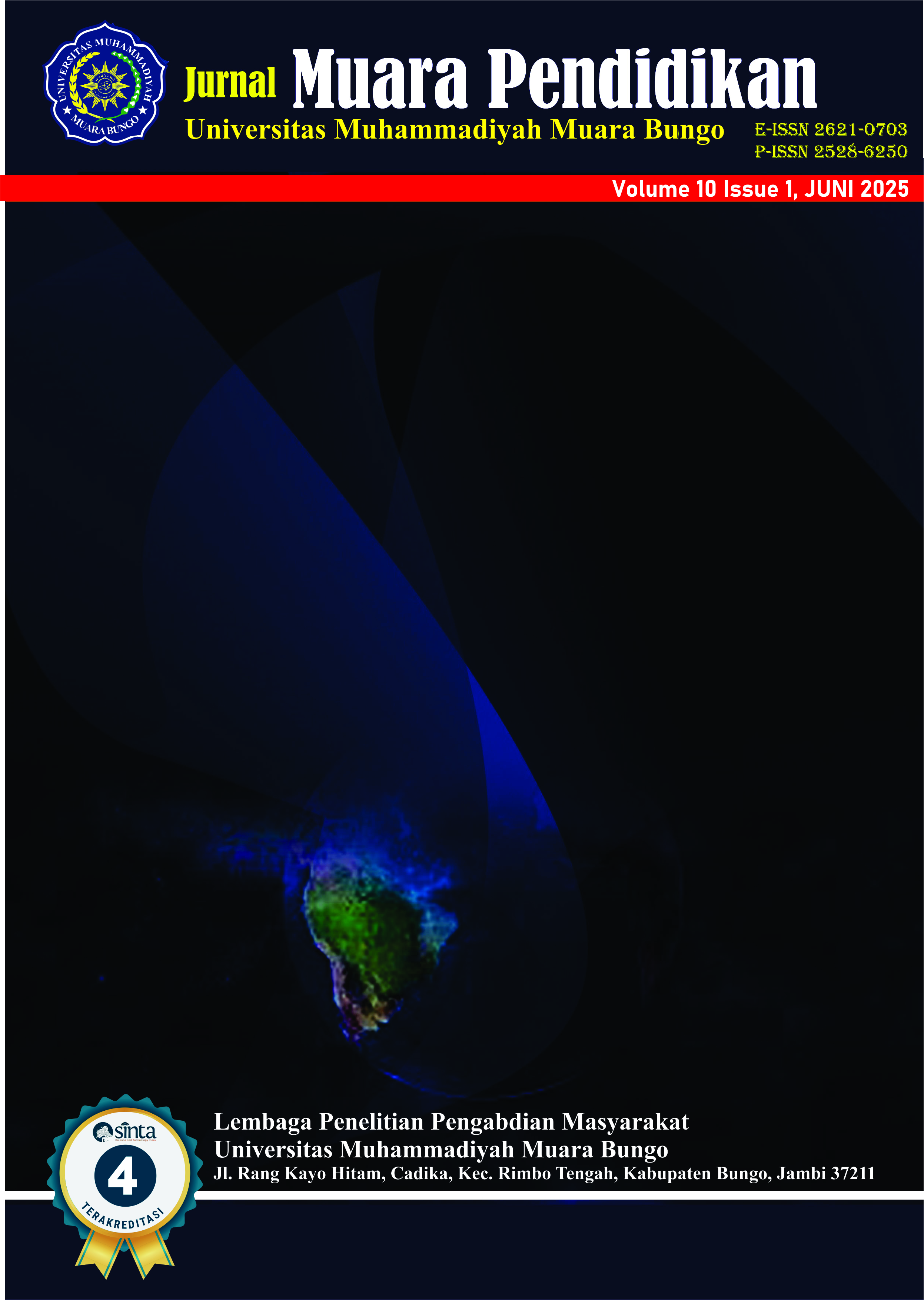THE RELATIONSHIP BETWEEN EXTRACURRICULAR ACTIVITIES WITH ACADEMIC PERFORMANCE FOR THE COLLEGE STUDENTS AT STIKES RS HUSADA: A QUANTITATIVE STUDY
Abstrak
Students as agent of change play a crucial role in contribuiting to the nation’s progress. Recognizing this responsibility, students must develop their skills and abilities not only through lectures and academic activities but also through various campus activities. This research aims to explore the relationship between extracurricular activities and academic performance among college students at STIKes RS Husada. This quantitative study involved 48 students participating in extracurricular activities. Results indicated that students' academic performance is in the medium category, with the mean value reflecting a reasonably adequate level of achievement. Chi-square test analysis showed that the variable X data follows a normal distribution, providing a strong basis for further statistical analysis. Additionally, the homogeneity of variance test confirmed that data for variables X and Y are homogeneous at the 1% significance level, supporting the reliability of the statistical analysis for both variables. Increasing extracurricular activities is seen as an effective strategy to enhance academic performance, with a positive correlation observed between extracurricular involvement and student achievement
Unduhan
Referensi
Adhawati, SS, Fakhriyah, S. dan S. (2019) ‘Campus Intellectual Product Business Development Program (PPMU-PPUPIK): Tuna Nut Cookies Product.’
Chairani, M. and Juwita, R. (2019) ‘The Influence of Extracurricular Activities on Students’ Academic Achievement at SMP Negeri 1 Peusangan’, Jurnal Sains Ekonomi dan Edukasi, 7(2), pp. 10–19.
Iskandar, S. et al. (2024) ‘The Role Of Extracurricular Activities In Developing Students’ Interests And Talents In Elementary Schools’, Journal of Pedagogi, 1(3), pp. 8–13. Available at: https://doi.org/10.62872/bma2fa05
Kartikasari, M.L., Sultoni, S. and Sumarsono, R.B. (2019) ‘The Relationship Between Participation in Extracurricular Activities and Students’ Academic Achievement’, Jurnal Administrasi dan Manajemen Pendidikan, 2(3), pp. 083–089. Available at: https://doi.org/10.1007/s10964-011-9737-4
Knifsend, C. A., & Graham, S. (2012) ‘Too much of a good thing? How breadth of extracurricular participation relates to school-related affect and academic outcomes during adolescence. Journal of Youth and Adolescence, 41(3), 379–389.https://doi.org/10.1007/s10964-011-9737-4
Laurie K. Collings (2020) ‘The Impact of Extracurricular Activities and High School Students ’, Socius: Sociological Research for a Dynamic World, pp. 1–52.
Ludovikus Ludovikus, Yurita Mailintina and Ellynia Ellynia (2023) ‘The Perception of Using TED Talks in Enhancing College Students’ Listening Skill for The Fourth Semester of Health Administration Students at STIKes RS Husada academic year 2023 –2024’, Jurnal Nakula : Pusat Ilmu Pendidikan, Bahasa dan Ilmu Sosial, 1(5), pp. 66–93. Available at: https://doi.org/10.61132/nakula.v1i5.186.
Lutriani, Mustari Lamada and Massikki (2022) ‘The Influence of Students’ Activeness in Extracurricular Activities on the Academic Achievement of Grade XI RPL Students at SMKN 2 Wajo’, Information Technology Education Journal, 1(1), p. 2. https://doi.org/10.59562/intec.v1i1.151
Ningsih1, V.Y., Bardi2, S. and M.Yusuf Harun3 (2017) ‘1 , 2 , 3 1’, 2, pp. 116–124.
Rika Widianita, D. (2023) ‘Covariance Structure Analysis of Health-Related Indicators in Home-Dwelling Elderly with a Focus on Subjective Health Perception’, At-Tawassuth: Jurnal Ekonomi Islam, VIII(I), pp. 1–19.
Sugiyono. (2019) ‘Quantitative and Qualitative Research Methodology and R&D’.
Trianziani, S. (2020) ‘View metadata, citation and similar papers at core.ac.uk’, 4(November), pp. 274–282.
Umamah, K.N. et al. (2018) ‘Academic Achievement in Relation to Adolescents’ Involvement in Extracurricular Activities’, Jurnal Muara Ilmu Sosial, Humaniora, dan Seni, 2(1), p. 108. Available at: https://doi.org/10.24912/jmishumsen.v2i1.1688
Walker, J., Marczak, M., Blyth, D., & Borden, L. (2016) ‘Designing youth development programs: Toward a theory of developmental intentionality. In J. L. Mahoney, R. W. Larson, & J. S. Eccles (Eds.), Organized activities as contexts ofdevelopment: Extracurricular activities, after-school and community programs (’.
Yhunanda and Sholeh, M. (2020) ‘The Role of Extracurricular Activities in Efforts to Improve Student Achievement’, Jurnal Inspirasi Manajemen Pendidikan, 8, pp. 531–544.
| Keywords | : | |
| Galleys | : | |
| Diterbitkan | : |
2025-06-03
|
| Cara Mengutip | : |
Ludovikus, L., Vivi Ayu Lestari, Rahma Juwita, Najib Mutawally, A., Sabarina Panjaitan, R., & Natalia, I. (2025). THE RELATIONSHIP BETWEEN EXTRACURRICULAR ACTIVITIES WITH ACADEMIC PERFORMANCE FOR THE COLLEGE STUDENTS AT STIKES RS HUSADA: A QUANTITATIVE STUDY. Jurnal Muara Pendidikan, 10(1), 16–21. https://doi.org/10.52060/mp.v10i1.2915
|
| Terbitan | : |



.png)



.png)


.png)
.png)
.png)


_SCCC.png)

